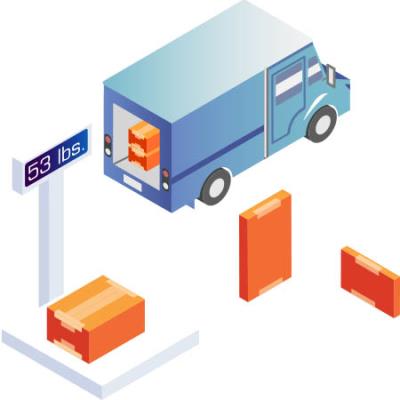REDWOOD LOGIN
Redwood PortalLTL
SCS
SCS Support
Rockfarm
It is estimated that more than 25 Million individual packages or parcels are shipped in the United States each day. Whether it’s through USPS or overnight carriers including Fed Ex or UPS, businesses and individual consumers depend on parcel shipping. On the other end of the spectrum, the top 10 consumer commodities are shipped via LTL or less-than-truckload logistics services. In the end – both shipping methods have something in common – the growing use of dimensional rating for shipment estimates.
The dimensional rating system for estimating shipping charges has been around for quite some time. While it has roots in the parcel industry, it is quickly expanding to the LTL marketplace. Let’s take some time to review the history of DIM weights and how this once parcel-exclusive rate estimation process is now the future of LTL.
 Dimensional ratings or DIM weight pricing is a theoretical weight of a package that factors the volume of the package as opposed to the density or actual weight. This method factors the space it takes up within a shipping method vs. the actual size or weight of the commodity. Typically, the dimensional rating is calculated by measuring a package along with the longest dimension in each of the three axes (the X, Y, and Z). This determines the volume of each package.
Dimensional ratings or DIM weight pricing is a theoretical weight of a package that factors the volume of the package as opposed to the density or actual weight. This method factors the space it takes up within a shipping method vs. the actual size or weight of the commodity. Typically, the dimensional rating is calculated by measuring a package along with the longest dimension in each of the three axes (the X, Y, and Z). This determines the volume of each package.
There are several names for this type of measurement ranging from DIM weights to cubed weight or volumetric weight. In the end, the freight carrier will use the greater of the actual weight or DIM weight to calculate accurate freight charges. The dimensional weight rate is often calculated as (width x length x height) and divided by the dimensional factor (determined by each individual carrier based on their shipment method).
For those looking for a layman’s definition – DIM weights essentially measure how much space cargo takes up in an individual container vs. the practical space. A real-world example of this would be comparing two similar sized pieces of freight. For sake of argument, let’s assume that one company ships two boxes via an LTL carrier. Both measure the same length, same width, and same height. However, one package contains stainless steel, and the other contains pillows.
Obviously, the package with steel will weight much more than the pillows but would also require special handling. A box with steel can’t be stacked on top of pillows or other lightweight cargo that can be damaged by the excessive weight. So, although they might take up the same ‘space’ – the box with the added weight must be stacked on the bottom of a pallet within LTL shipments – and even overnight parcel shipments. The DIM calculation keeps pricing fair, accurate, and more consistent for the shipper and carriers.
The question as to where dimensional rating began – this is a bit more difficult to pinpoint. There are several parcel carriers who claim to be the first to integrate the DIM weight calculation. Fed Ex Express has used this method for years, as has UPS, and DHL on the international front. While these overnight carriers officially swapped to overall DIM weight pricing in 2015, the United States Parcel Service followed suit recently.
The DIM weight concept took off in the overnight parcel industry as carriers started to realize the additional cost of shipping similar sized parcels with different weights. In the early days of these operations, shipping rates for certain sized parcels were estimated at the point of pick-up, as the courier would physically measure the package and enter in their scanning equipment. As technology improved, the dimensional ratings would be completed at shipping hubs, to provide more accurate estimations for shippers.
The LTL industry has been using antiquated billing methods for decades. In the past, the carrier would provide the shipper with an estimate for shipping based on the size, weight, the distance of shipment, and any special handling requirements. However, it wasn’t very accurate and often benefited the carrier – especially with LTL shipments vs. FTL shipments. LTL carriers listened to their shippers, who were looking for more accurate pricing estimates at the point of pick-up or prior to shipping to their customers.
The future of dimensional ratings with LTL carriers is strong – as it provides all parties involved in the logistics process with accurate and fair pricing. This pricing method removes the guesswork involved in LTL logistics, allowing shippers to better plan, budget, and serve their customers with on-time delivery of their products – at an affordable price.